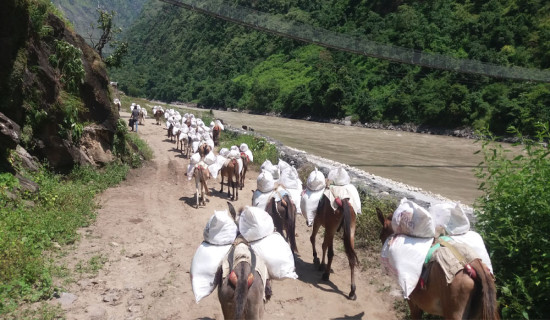- Sunday, 5 May 2024
Integrated Action Plan
Immediately after his appointment to the post of Prime Minister, Pushpa Kamal Dahal Prachanda had pledged that he would devote himself to ensure stability, good governance and prosperity of the country. PM Prachanda had directed all government secretaries to prepare integrated action plan and work accordingly. He had given greater emphasis on the effective delivery of goods and services to the people. The other day, the Office of the Prime Minister and the Council of Ministers gave an integrated form to the action plans prepared by the ministries as per the PM’s instruction.
The integrated action plan seeks to simplify the overall delivery process that has been complicated due to lengthy bureaucratic procedures. It will also boost the inter-ministerial coordination so that service delivery and development works are carried out smoothly and effectively. The common people have to undergo ordeals to acquire passports, national identity cards, driving license, land registration and other official tasks.
At the meeting, Prime Minister Prachanda instructed the secretaries to implement the action plans bearing in mind the upcoming fiscal year’s budget and making timetable accordingly. The meeting between the Prime Minister and secretaries are expected to continue in the days ahead as it will be important to iron out the differences between the political and administrative mechanisms.
The secretaries have to take initiative to immediately resolve the queue system implemented in distribution of electronic passports to the citizens as the service-seekers continue to complain about the difficulty in obtaining them. More than a month back, the PM had instructed the Department of Passport under the Ministry of Foreign Affairs to distribute passports to the people without any hassles. This was just an example of the priority of the government working on the basis of common minimum programme (CMP).
The integrated action plan aims to implement the CMP so as to make the people feel a sense of change with the installation of new dispensation. It has stressed economic prosperity, rapid development, corruption control and people’s easy access to the public utilities. The 21-point CMP has envisioned ‘Make in Nepal' programme, implement the Digital Framework Nepal by amending it, increase the use of digital technology in the public services and production, provide broadband internet services free of cost in public places such as schools, hospitals, government offices and fiscal institutions. The integrated action plan must be geared towards providing citizenship certificate to the deprived ones within next six months. It has set an ambitious target of distributing the national identity cards to all Nepalis within a year, which is really challenging.
A stable and strong government is required to translate the objectives of CMP. There are various speculations regarding the future of the coalition government after Rastriya Swatantra Party (RSP) quit it. However, the RSP has not withdrawn its support to the government. Minister for Communication and Information Technology and government spokesperson Rekha Sharma has made it clear that the government is not facing any political crisis and efforts are underway to rope the RSP into the government. Although the RSP's exit from the government does not pose an immediate threat to the government, its participation further strengthens it in implementing its stated goals. Now it is imperative for the political and bureaucratic leadership to work in tandem to translate the integrated plan into action, thereby achieving good governance and inclusive prosperity.
















